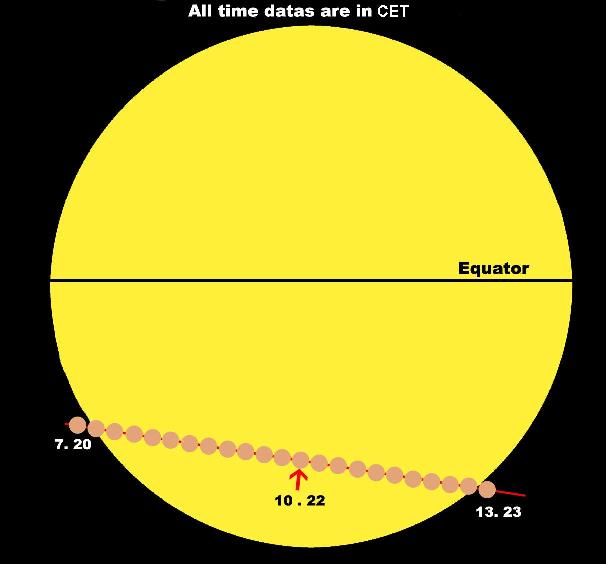|
|
Interlacement across the Sun diskA unique opportunity arose to me on the 8th June 2004. It was possible to observe interlacement of Venus across the Sun disk after 122 years. We can say that it's eclypse of the Sun by Venus, but due to long distance it has no influence on inhabitants of the Earth.
I woke up to the cloudy morning. There were not many clouds so the sky got clear before the beginning of phenomenon. When I got to the observational place nobody was there. After a while I saw two figures in the distance - it was Ing. Milan KoöĚŠl and his friend. Milan became professional supervisor of observation. We packed binoculars and searched for the Sun disk using visors. We observed it through reflector (reflexing binoculars) type Newton on contour line instalation. We took photos by an old refractor (len binoculator) and another camera on paralytic enotalation with hundredpold extension. To me it was the best to watch through reflector, because it was possible to see orange colour of the Sun and black crossing Venus. On the other side it was possible to see blue atmosphere observating by reflector. We also used a welding glass number 9 with foil coming from the floppy disc. At 7:20:30 a.m. Venus first bit into the Sun. The most interesting part of phenomenon was the effect of black tear (drop). It is caused by refraction in very dense atmosphere of the planet.
We were not able to see the effect of black drop because of the clouds, which came shortly after we started observating. When the clouds were blown away, Venus took place near of the side of the solar disk. The planet was the most "bit into" the Sun at 10:22 a.m. It was in the 1/5 of the Sun diameter from the downer side of solar disk. When clouds disappeared. Venus was by the side of solar disk. We started to be pesimistic about not being able to take photos of the second black drop. We had a luck and Milan took photo of this drop. It was 21 minutes to the end of interlacement. Unluckily, we were not able to observe the exit, because the Sun was sheltered by clouds. They went off at 13:23:57 p.m. but Venus wasn't visible anymore. Another opportunity to watch interlacement will accure on the 6th June 2012. That one who missed the chance to observe it this year should see the phenomenon in 2012, because it's unforgotable experience.
|
 |
|


